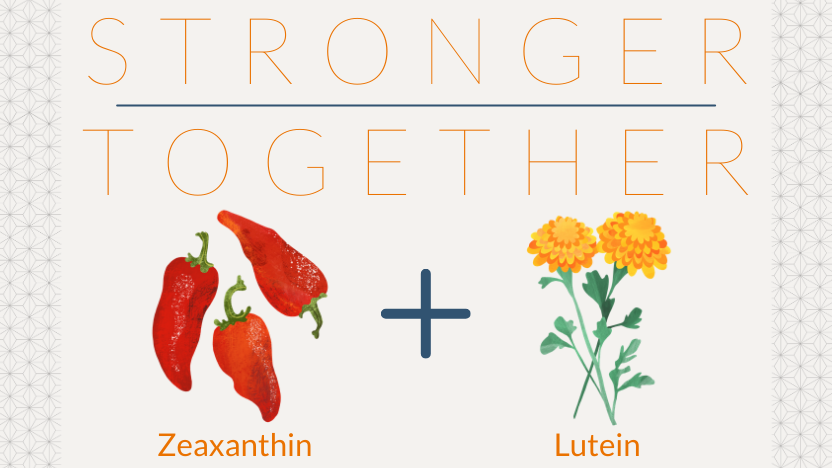Lutein and Zeaxanthin: Stronger Together
Posted by EyePromise on Nov 14th 2017
Researching what vitamins are right for you can turn into a confusing rabbit hole. Especially when it comes to eye health vitamins. Zeaxanthin and lutein are two of the most popular vitamins you'll find for eye health, but do we really need both?
What's Zeaxanthin & Lutein?
There are two important facts to know about zeaxanthin & lutein:
- They're nutrients/antioxidants that are found in certain foods like dark leafy greens, peppers, corn, and marigolds.
- We’re all BORN with certain amounts of these antioxidants. Zeaxanthin and lutein are found in the back of our eyes, protecting our source of vision from harmful light.
Why Do We Need Both?
Zeaxanthin is the key nutrient that acts as your “internal sunglasses,” meaning it literally deflects light from harming your vision. But a healthy eye contains a natural 2:1 ratio of zeaxanthin to lutein, meaning that while zeaxanthin is the more vital nutrient, lutein is needed as a booster. Even though we're born with these nutrients, our bodies do not naturally produce them, meaning we have to find another way of getting them. Without zeaxanthin and lutein, our vision is more vulnerable to harmful light that can lead to age-related eye health issues: one of the leading causes of blindness in those aged 55 and older.
What Foods Contain Zeaxanthin & Lutein?
 The chart above is pretty intimidating. In order to get the right amounts of zeaxanthin and lutein to protect your vision, you'd have to eat the huge quantities of foods seen above. That's a lot of veggies. It's almost impossible to eat enough of the foods necessary to protect your vision.
The chart above is pretty intimidating. In order to get the right amounts of zeaxanthin and lutein to protect your vision, you'd have to eat the huge quantities of foods seen above. That's a lot of veggies. It's almost impossible to eat enough of the foods necessary to protect your vision.
What's the Next Best Option?
This is where protecting your vision gets a bit easier. Taking an eye vitamin with enough dietary (natural) zeaxanthin and lutein can replenish your stores of these nutrients and fully protect your vision. Want to learn more? Click here to find out which EyePromise eye vitamin is right for you!

